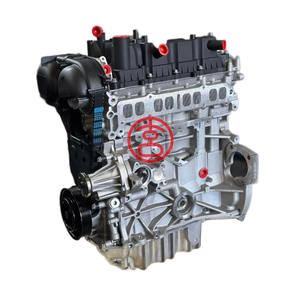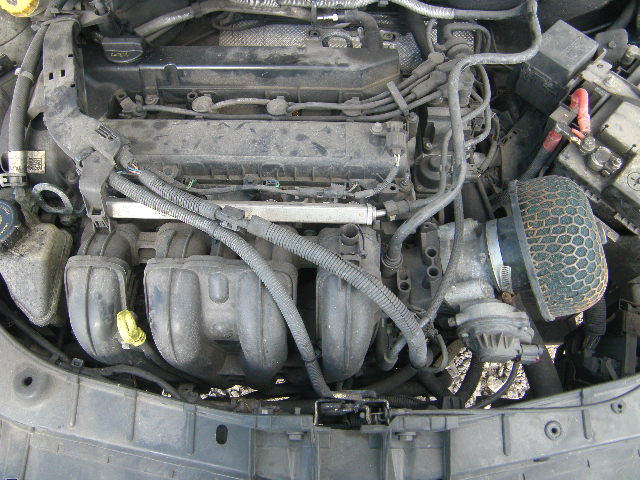Why Choosing the Right Ford Fiesta Engine Parts Matters for Longevity
Why Choosing the Right Ford Fiesta Engine Parts Matters for Longevity
Blog Article
Checking Out the Advancement of Engines: From Traditional Layouts to Modern Marvels
The evolution of engine modern technology stands for a considerable story in the background of technology, marked by critical developments that have actually consistently redefined transportation and market. From the first steam engines that powered the Industrial Transformation to the appearance of internal combustion engines that transformed wheelchair, each stage has actually added to better efficiency and capability. Currently, the transition to electric power symbolizes not just a technical change yet additionally a more comprehensive dedication to ecological sustainability. As we check out these landmarks, one have to take into consideration just how the future of engine layout might unravel, challenging our perceptions of power and effectiveness.
The Birth of Engine Modern Technology
The introduction of engine innovation marked a critical moment in human innovation, transforming energy conversion and transportation. The earliest engines arised from the need to harness mechanical power for sensible usage, leading to the development of gadgets that transformed numerous energy forms into activity (ford fiesta engine).
The growth of the internal combustion engine and the creation of the heavy steam engine militarized an extensive change in industrial abilities. These engines not just boosted performance but also broadened the range of human flexibility, enabling unprecedented transportation opportunities. The very early models laid the foundation for the mechanical globe, helping with the increase of markets and reshaping societal structures.
As engine designs progressed, they progressed and included ingenious materials engineering concepts, leading the means for contemporary developments - ford fiesta engine. The birth of engine innovation ignited a relentless pursuit of performance and power, setting the stage for the vibrant advancement of transport and commercial machinery that would certainly adhere to
Vapor Engines and Their Impact

The heavy steam engine's impact was specifically apparent in the transportation field (ford fiesta engine). Steam-powered engines promoted the fast motion of products and individuals throughout huge distances, properly diminishing the geographical obstacles that had formerly impeded profession and communication. Similarly, steamships changed naval travel, permitting quicker and a lot more trustworthy crossings of oceans and rivers.
In industry, steam engines powered manufacturing facilities, enabling mass production and the surge of metropolitan centers as centers of financial task. This change not just modified labor characteristics however also added to the emergence of a consumer-driven culture. Moreover, vapor modern technology promoted innovations in design and production procedures, preparing for future advancements in engine style. The tradition of vapor engines is profound, mirroring a turning point in human ingenuity and the ruthless pursuit of progress.
The Surge of Internal Combustion
Often overshadowing heavy steam power, the surge of internal burning engines noted a transformative change in transportation and market during the late 19th and early 20th centuries. The development of these engines, identified by their capability to melt fuel within the engine itself, allowed better reference effectiveness and power compared to standard steam engines. Pioneering innovators such as Nikolaus Otto and Rudolf Diesel played vital roles in perfecting engine styles, bring about extensive fostering in vehicles, watercrafts, and industrial machinery.
The interior combustion engine's portable size and fairly light-weight nature assisted in the emergence of personal cars, reinventing private wheelchair and reshaping metropolitan landscapes. By making it possible for faster traveling and the reliable transportation of goods, these engines catalyzed financial growth and promoted globalization. The flexibility of fuel alternatives, consisting of fuel and diesel, further enhanced their appeal, enabling for varied applications across different industries.
In spite of the environmental problems that would later arise, the first allure of internal combustion innovation lay in its transformative potential. As culture embraced this innovation, the structure was laid for modern transportation systems, developing interior combustion engines as a foundation of commercial advancement and life throughout the 20th century.
Improvements in Engine Effectiveness
As internal combustion engines became integral to transportation and sector, the focus changed in the direction of boosting their performance to fulfill growing needs for efficiency and sustainability. Technologies in engine layout, material scientific research, and innovation have actually dramatically added to this evolution.
One major improvement is the growth of turbocharging, which allows for increased air intake, causing even more total fuel burning and improved power output without enlarging engine dimension. In addition, variable shutoff timing systems have been carried out to enhance engine efficiency throughout numerous RPM arrays, thereby enhancing gas effectiveness.
The utilization of advanced fuel shot modern technologies, such as direct shot, has likewise played a crucial function. This approach enables for even more specific control over the fuel-air blend, advertising better combustion and minimizing exhausts. In addition, lightweight products, including light weight aluminum and composite parts, have actually been taken on to reduce overall engine weight, bring about boosted efficiency.
These improvements reflect a wider pattern within the auto industry, where the harmony between engineering technology more information and environmental considerations drives the continuous quest for higher efficiency in interior burning engines. Therefore, contemporary engines are now more effective, cleaner, and efficient than ever, paving the way for a more lasting future in transport.
The Change to Electric Power
With expanding problems over environmental impact and fossil fuel dependence, the automotive market is experiencing a considerable shift towards electric power. This shift is driven by a mix of technical improvements, regulative stress, and transforming customer choices. Electric automobiles (EVs) use an engaging option to typical interior combustion engines, boasting reduced greenhouse gas discharges and reduced operating expenses.
The increase of battery innovation has actually been a video game changer, with lithium-ion batteries becoming much more efficient and cost-effective. Boosted power thickness and faster charging capabilities have made EVs much more functional for day-to-day usage. Federal governments worldwide are executing incentives and setting ambitious targets for phasing out fossil gas vehicles, consequently increasing the adoption of electrical power.
Significant automakers are spending greatly in r & d, resulting in the intro of a varied variety of electric models. This includes not only guest automobiles however likewise business lorries and public transport services. As charging framework expands and battery innovation proceeds to improve, the shift to electric power is positioned to improve the auto landscape, advertising sustainability and technology in the years ahead. The future of transportation is electric, and the momentum is undeniable.
Final Thought
The evolution of engine modern technology represents a considerable trajectory of advancement that has actually greatly influenced transport and industry. From the fundamental heavy steam engines to the transformative interior combustion engines, each development has added to enhanced movement and economic growth.

Report this page